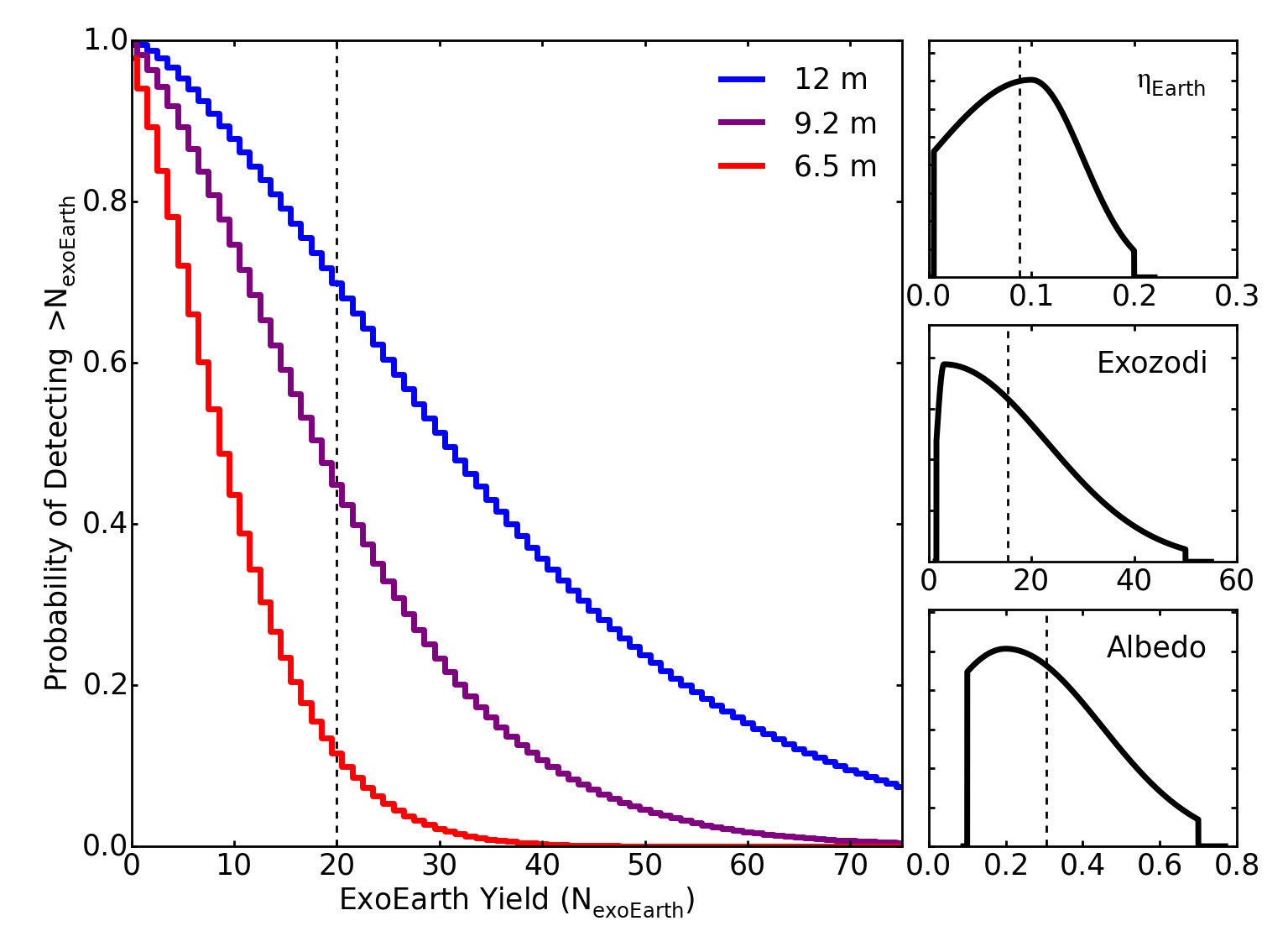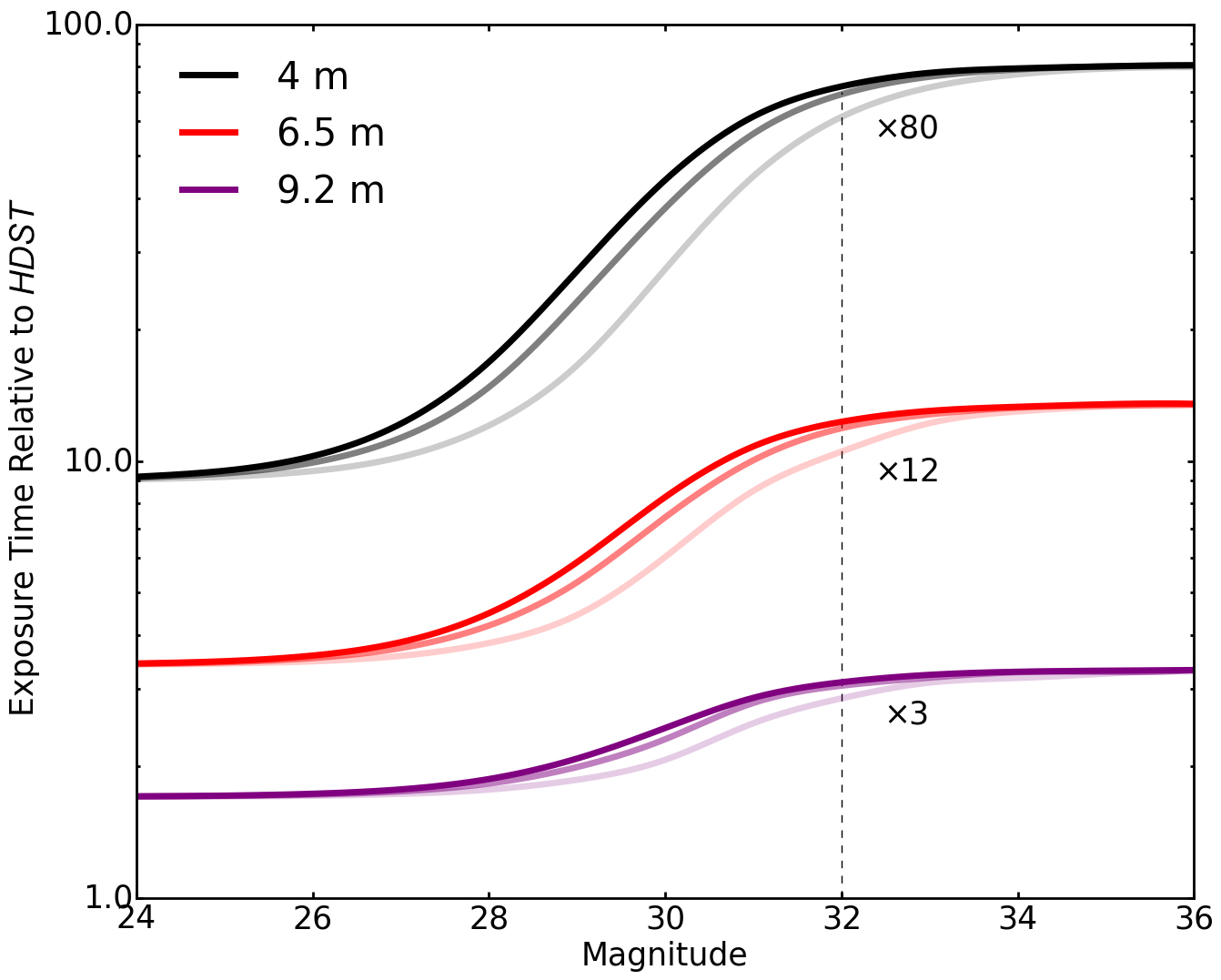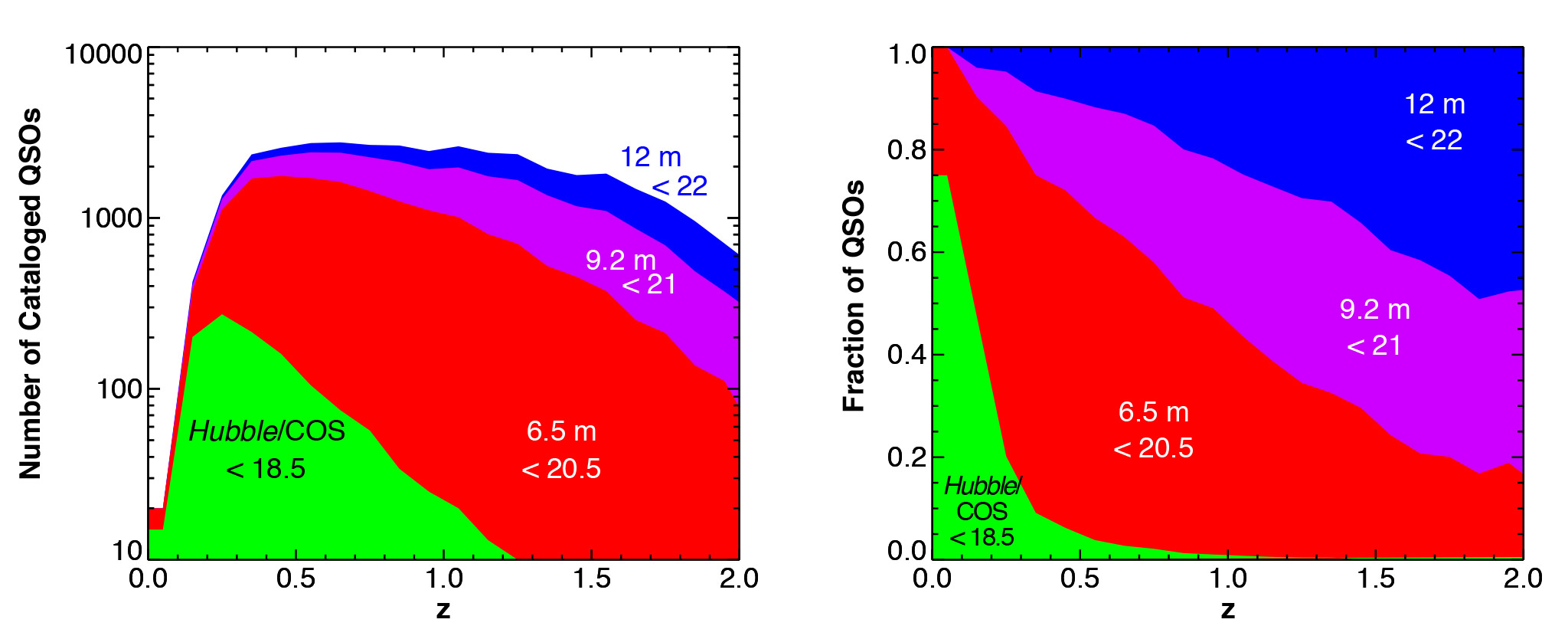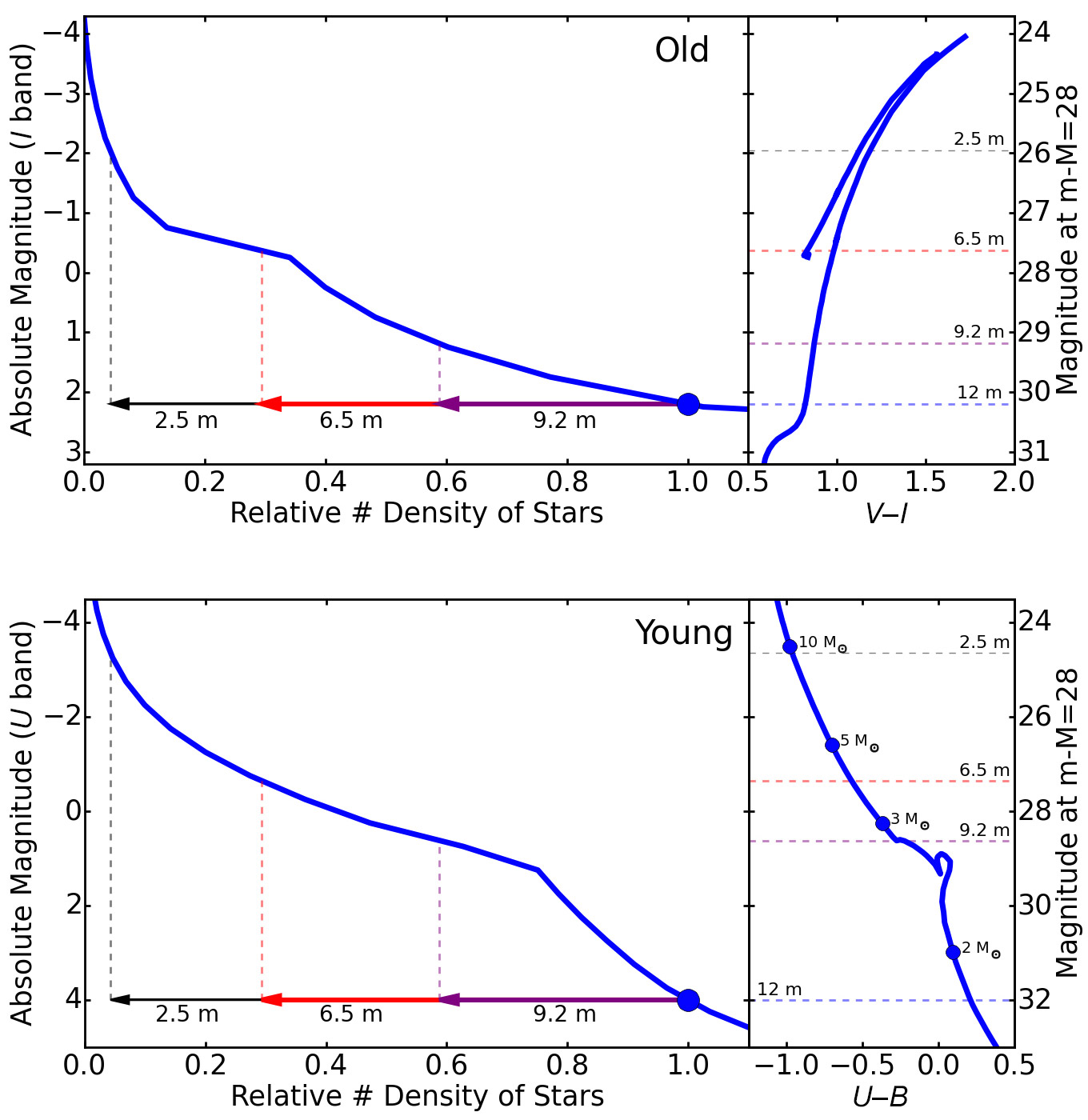Gallery: Chapter 7
Gallery: Chapter 7

Table 7-1
Key Technology Heritages

Figure 7-1
The possible range of exoEarth yields (left), given the uncertainties in astrophysical parameters (the earth occurrence rate, the level of exozodiacal light, and the planet albedo; right panels, top to bottom), for the nominal HDST 12 m, and the possible 9.2 m and 6.5 m descope options (assuming an IWA of 3 λ/D, and 1 year of on-sky integration including both detection and spectroscopic characterization). Histograms indicate the probability that a mission would find more than a given number of exoEarths. For a fixed telescope aperture and starlight suppression performance, there is a large range in possible yields that reflect how favorable the true astrophysical parameters are. Larger telescopes offer better protection against the possibility that astrophysical parameters are skewed to values that make exoEarth detection more difficult. Vertical dashed lines in the right panels indicate the median value of each astrophysical parameter.

Figure 7-2
The increase in the exposure time for a 10-sigma detection of a point source when descoping from a 12 m to a 9.2 m (purple line) or a 6.5 m (red line), as a function of magnitude. In the background limited regime (>29 mag), exposure times increase by a factor of 3 for a 9.2 m and by a factor of 12 for a 6.5 m. Light, medium, and dark lines are for the U, V, and J bands, respectively. A 4 m aperture (black line) is included for comparison.

Figure 7-3
The fraction of currently cataloged UV-bright QSOs in bins FUV magnitude (AB < 18.5 for Hubble, < 20.5 for a 6.5 m, 21 for a 9.2 m, and < 22 for a 12 m HDST; left panel) as a function of redshift. Larger telescopes access significantly more sources and provide the majority of the most valuable high-redshift sources that support the evolutionary studies of galaxies, the CGM and IGM, and AGN (Chapter 4).

Figure 7-4
The change in limiting magnitude for crowding-limited observations of stellar populations when descoping from a 12 m to a 9.2 m or 6.5 m aperture. As shown from the stellar luminosity functions on the left, descoping to a smaller aperture restricts the observations to lower stellar surface densities, and thus to rarer, more luminous stars, leading to brighter limiting magnitudes. The top panel shows the impact on observations of an old stellar population that could resolve ~9 Gyr old main-sequence turnoffs with a 12 m HDST. The CMD on the right panel shows that a 9.2 m could no longer detect the old turnoff, and a 6.5 m could only detect much younger turnoffs and the red horizontal branch. The bottom panel shows the impact of smaller apertures on observations of young stellar populations, for which HDST could detect ~1.6 solar mass stars with ~2 Gyr lifetimes, while a 9.2 m and 6.5 m could only detect ~3 solar mass stars with 500 Myr lifetimes, and 5 solar mas stars with 100 Myr lifetimes, respectively. The rightmost axis gives apparent magnitudes at a distance of ~4 Mpc; there are many hundreds of galaxies within this volume.